Earl “Madman” Muntz, creator of the Jet, was a genius and a showman
If Earl Muntz was a madman, as his nickname suggests, then we should all strive to be a little crazy. Muntz, born 110 years ago this week, was no ordinary child—or teenager, or man. Muntz was a creative and technological genius who made, and ultimately lost, several fortunes, most with direct ties to the automotive industry.
Born on January 3, 1914, in Elgin, Illinois, Muntz was always fascinated by how things worked. He built his first radio at age eight, and by 14 he had already created a radio for his parents’ car. Higher education wasn’t meant to be, however. Muntz didn’t even graduate high school; he dropped out during the Great Depression to work in his parents’ hardware store, but he never stopped learning or inventing. Muntz also never stopped striving to make a better life for himself.
At age 20, he started his own dealership selling used cars, but until he turned 21 his mother had to sign all of the required documentation whenever he sold a vehicle. Muntz was earning a decent living when, at 26, he vacationed in California and decided there was even more money to be made on the West Coast. He opened a used car lot in Glendale, then lucked out by purchasing a handful of new cars that were scheduled to be shipped to Asia before World War II broke out and kept the vehicles stateside. Muntz decided to drum up hype in the local newspaper, and the cars quickly sold. He realized that the more attention he got, the more cars he would sell. The “Madman” was born.

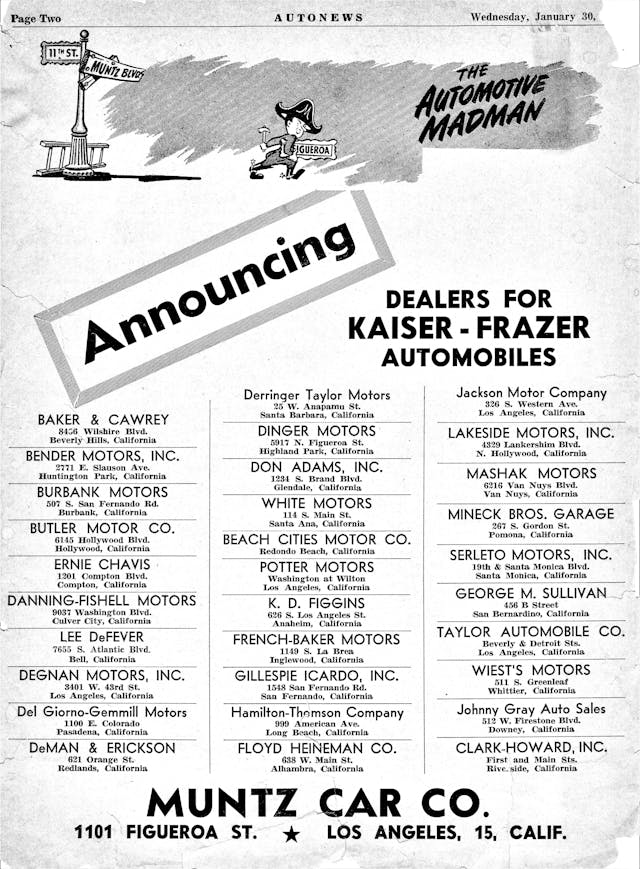
Nothing was too over the top for Muntz, as long as it generated publicity. He would don red full-body underwear and a Napoleon-like hat and boast on billboards and in newspaper ads that “I wanna give ’em away, but Mrs. Muntz won’t let me!” His commercials bombarded the radio airwaves. He would often feature a car, threaten to smash it with a sledgehammer if it didn’t sell by the end of the day, and follow through, which only generated more attention. His dealerships made millions.
Already a Southern California legend, Muntz turned his attention to manufacturing televisions, drawing from his early interest in electronics. He was all about simplification, making intricate TV sets a little less complicated by reducing the number of components required while also reducing the price. The “less is more” philosophy became known as “Muntzing.”
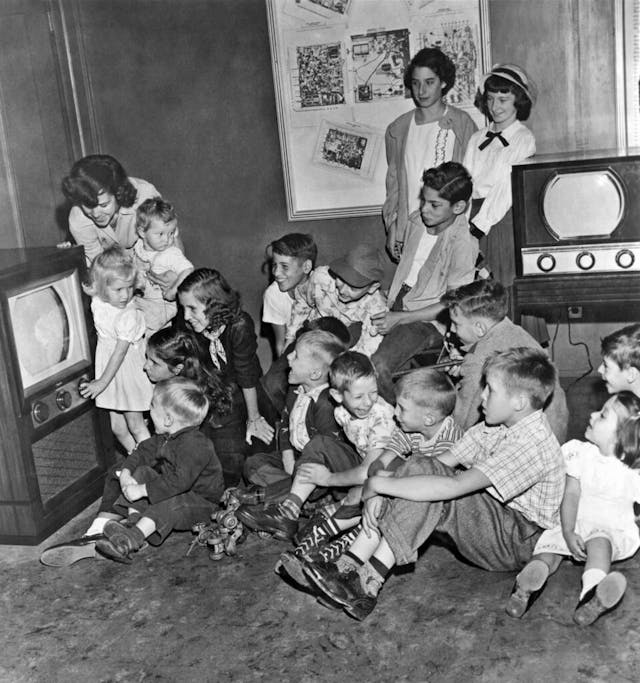
The Madman’s TVs sold for about $100 in 1949, about one-quarter the price of most of his competitors, and he made millions—again. The good times didn’t last, however, as Muntz’s stripped-down televisions required more maintenance than other brands, and he folded his TV venture in 1959.
During the same time, although Muntz had rejected an opportunity to sell Volkswagen Beetles when they rolled into the U.S. market in 1949, he owned Kaiser-Frazer dealerships on both coasts, one in Los Angeles and another in New York. The experience motivated him to create a car of his own, the Muntz Jet, beginning in ’49.
Oddly, while Muntz emphasized simplification when it came to TVs, he went in the other direction when designing his automobile. After purchasing Frank Kurtis’ two-year-old Kurtis Sport Car Company, Muntz transformed the KSC design into the Jet. He offered upgraded V-8s, built by Cadillac and Lincoln, that propelled the car to 125 mph and could be mated with either a General Motors Hydramatic automatic or a three-speed Borg-Warner manual transmission. He also extended the wheelbase by 13 inches to allow room for a backseat, which had a drink cabinet in the armrest. Buyers could order upholstery made of alligator, emu, leopard, or snakeskin. Each hubcap wore an emblem of a Napoleon-like cartoon character wearing red underwear.
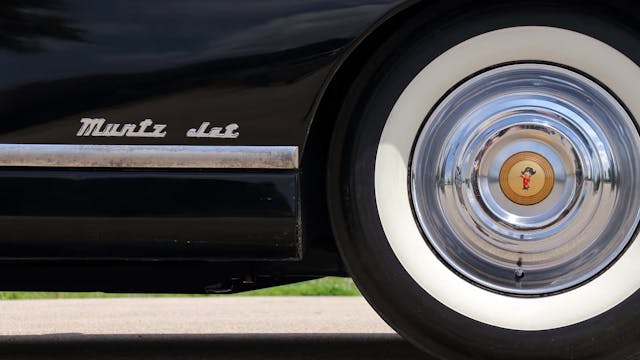
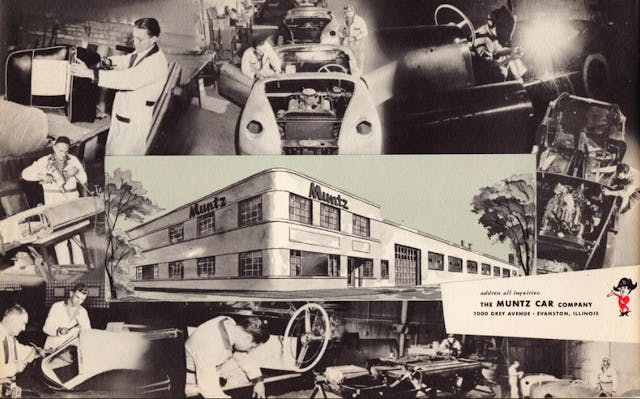
Built both in Glendale and Evanston, Illinois, the aluminum-bodied Jet was fast, luxurious, and innovative, with cutting-edge features like seat belts and a padded dash. Notable buyers included Hollywood stars Grace Kelly and Mickey Rooney. Once again, however, Muntz’s venture was unsustainable. The Jet retailed for $5500 in 1953 (about $63,250 today), but it cost $6500 ($74,750) to build. Only 198 were sold—Muntz claimed the number was twice that—and the Madman lost nearly a half-million dollars before shuttering his car factories.
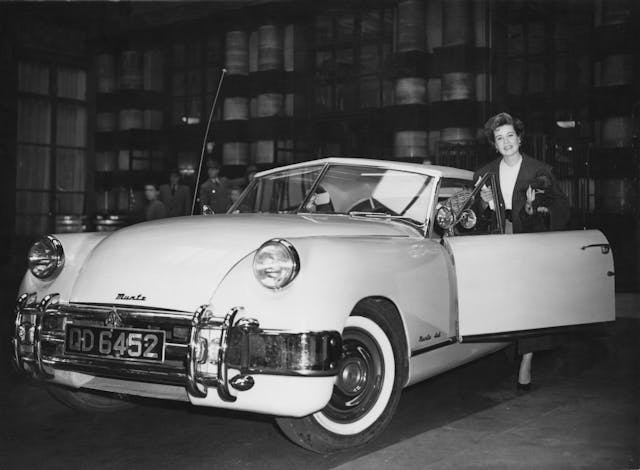
He wasn’t done, however. Turning his attention to car stereos in the late 1950s, Muntz took great interest in the new Fidelipac audio tape, the first recorded audio tape cartridge. It used an endless quarter-inch tape loop with three tracks, but Muntz added a fourth track so it could play full albums in stereo. Launching Muntz Stereo, in Van Nuys, California, in 1962, the Madman offered pre-recorded albums and Stereo-Pak players for both home and automobile. He made another fortune—and, once again, it didn’t last.

The graphite on Muntz’s tapes didn’t bond well with the tape—a problem that Muntz chose not to correct because the supplier offered him a favorable credit agreement—giving the tapes a short lifespan. Consumers eventually looked elsewhere, namely to Bill Lear’s new 8-track cartridge. Already buried in debt, Muntz Stereo suffered a warehouse fire in 1970, and the company folded.
Muntz trudged on, offering an alternative compact videotape in the 1980s that competed with VHS and Beta (and failed), and he later rented motorhomes (a venture he called Muntz Motor Mansions) and sold Hitachi cell phones and satellite dishes.
Earl “Madman” Muntz died of lung cancer on June 21, 1987, at the age of 73, having won and lost several fortunes and an endless number of fans. He will long be remembered as an ingenious and relentless inventor, entrepreneur, unconventional showman, and—most importantly to auto enthusiasts—the creator of the Muntz Jet. And you can always find him on the hubcaps.
***
Check out the Hagerty Media homepage so you don’t miss a single story, or better yet, bookmark it. To get our best stories delivered right to your inbox, subscribe to our newsletters.

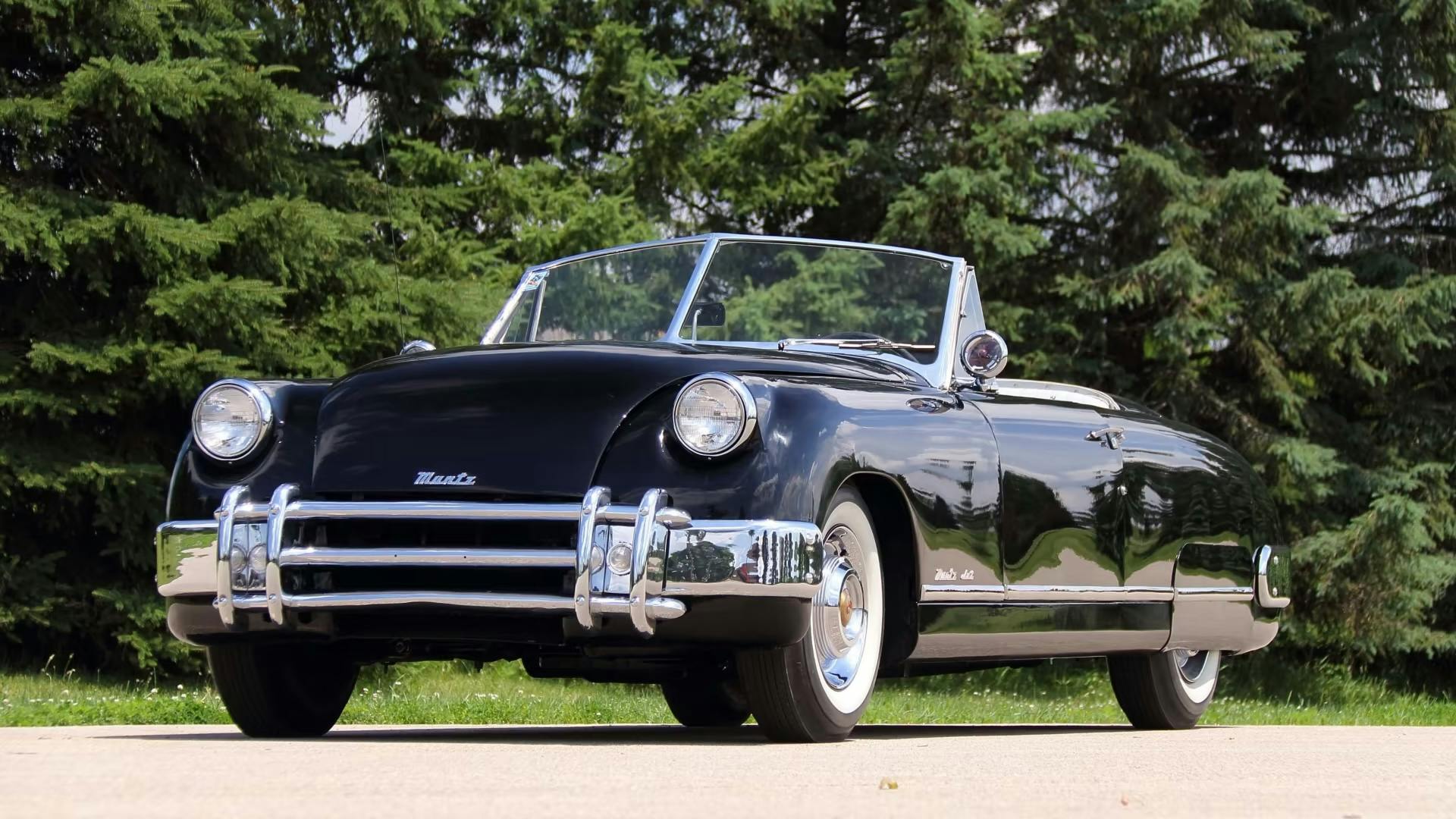
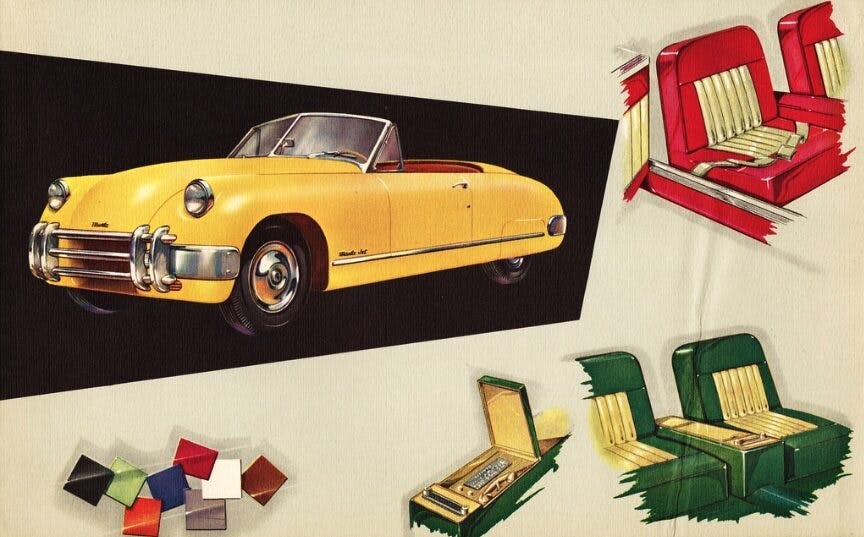
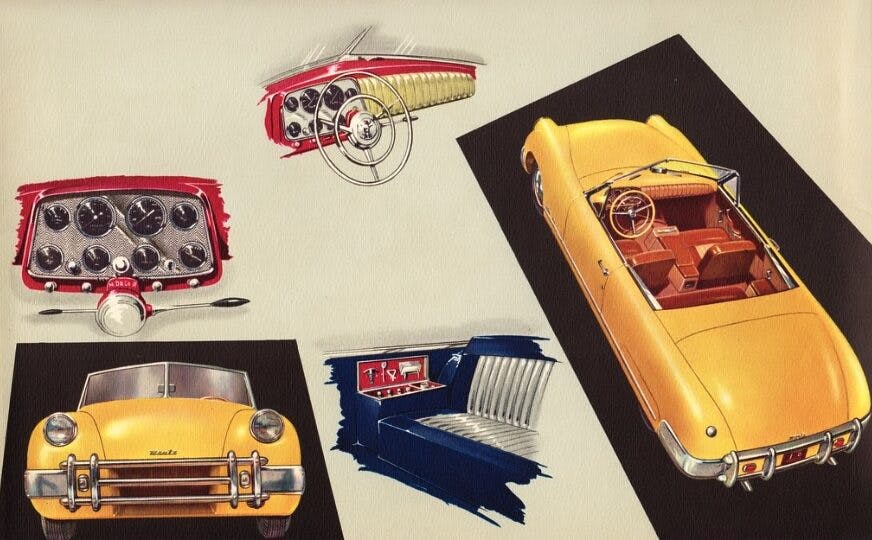
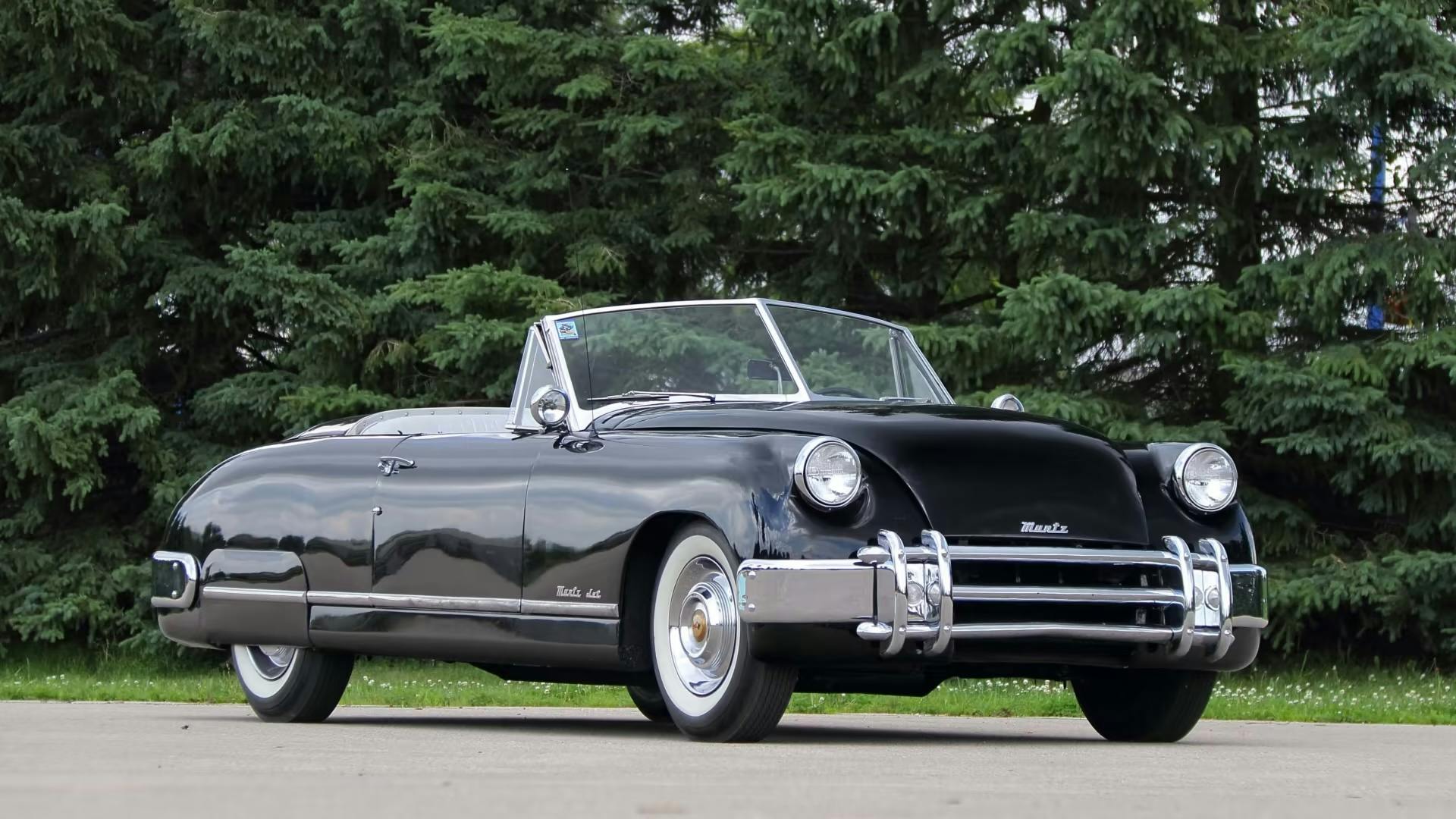



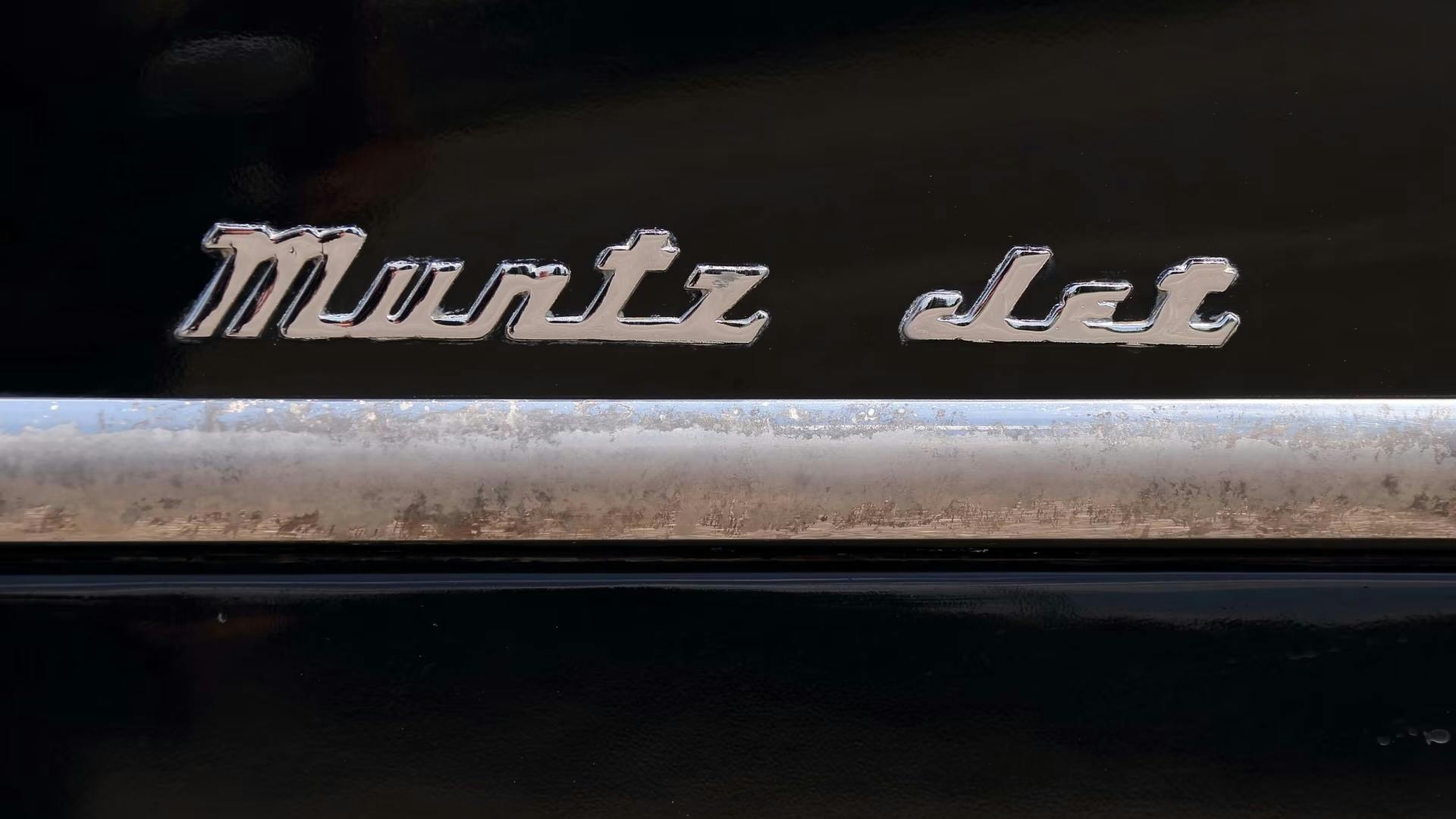
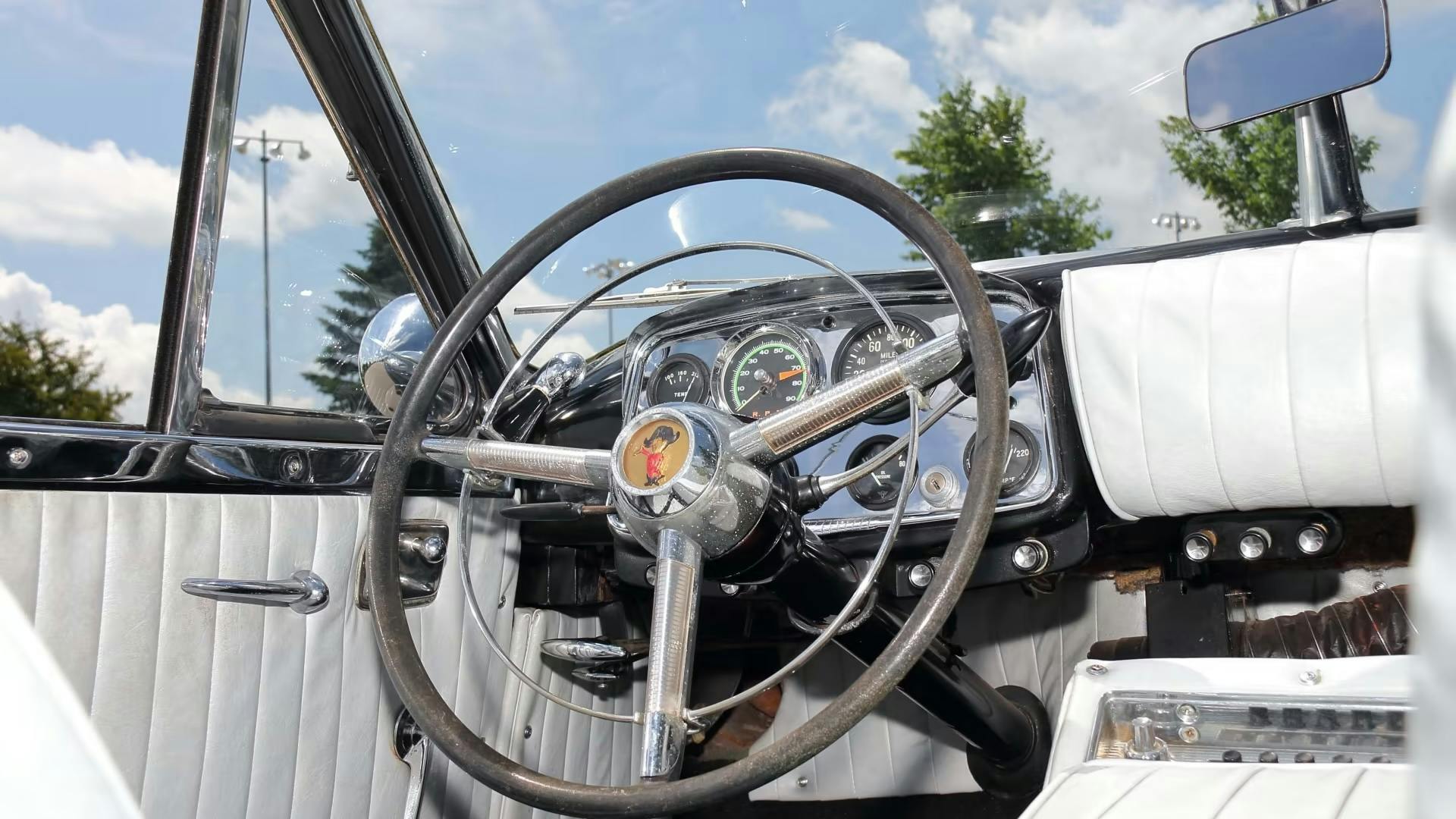


Is that a Studebaker dash? Love the hubcaps.
The Muntz Jet looks kind of cool. Wonder how many of them still exist? This “madman” sure knew how to utilize the media to get publicity, which sorta sounds familiar even today. 😉 At-any-rate, interesting story!
50 to 130 still exist according to this: https://en.wikipedia.org/wiki/Muntz_Jet
Thanks, Patrick – lots more than I would have guessed!
Knowing his legacy, I, decades ago, visited his cell phone store and brought my copy of Motor Trend (vol. 1, #1 iirc) that featured the Curtis Car on the cover. I had him autograph the cover, which he was happy to do.
The original Muntz stereo store location, in Van Nuys, is now part of Galpin Ford.
I recall visiting his store on Roscoe Blvd in Van Nuys in the late ’60s & early ’70s. Got a “blue light” tape deck for my Corvair. There was a Muntz Jet parked out back, gold in color, IIRC.
It looks good. I did not know much about the Muntz “ventures” into TV’s and cars, etc.
I can remember in the early 50’s when TV sets were the new rage. My brothers and I kept begging Dad to get a TV for us. We didn’t want to be last in the neighborhood to have one. He kept telling us that he was waiting until the sets were proven. Then, he read an article in Popular Science magazine about Madman Muntz and the new TV set he devoloped. Now was the time for a TV! After finding a store that sold the sets, he bought what he imagined was the biggest (27 inch) and best with the fewest tubes to cause any problems. Surprisingly, that set was still in use for over 20 years with only a few tubes needing replacement. The only reason Dad finally got rid of the set was that the picture tube was becoming too dim to see anything. Added to that, my mother told him to open his wallet and let the moths out and buy a new COLOR Tv. He did and peace returned to the household.
Never heard of him or the Jet. Great history lesson and fun trip through the WayBack machine!
I wonder how he felt at the end of his life — all that winning and losing. Would he have said, “Boy, it was worth it!”. I suppose so!
Robin Williams drove a Muntz Jet in the movie Toys. Pretty sure I was the only person in the theater that knew what it was.
Dang! I really like the looks of that thing!
You missed one business venture that Madman was involved in. In 1970 I was Purchasing/Materials manager for Sega Industries in Redondo Beach, Ca. The primary business of Sega was arcade machines. The President of Sega and Madman made a joint venture to sell large screen TV’s. The cabinets were the size of a dining room hutch. The TV was mounted in the lower part of the cabinet and with the use of mirrors was projected onto a large screen about 24″ by 36″. They were called Muntz TV’s. If I recall the venture only lasted 2 or 3 years. The TV’s worked pretty good for a “first” projection TV but the cabinets that housed the TV was very expense to make. I was involved in downsizing and selling off of inventory. What was interesting to me was that the manufacturing plant was a two story building and the manufacturing floor was all open to the second floor offices and a few guest “visiting/party” rooms. I owned one of the sets for about 2 years until the TV went out and I used the Cabinet as a place to put a standard size TV in place of the projection screen.
I remember both the Muntz TVs when they were new (a friend’s family had one), and seeing a Muntz Jet occasionally tooling around Ft Lauderdale, where I grew up in the late 50s/early 60s. Far more common then the Muntz was seeing Sandy Jennin driving one of his 16 or so Tuckers he had stashed away in a garage.
Ft Lauderdale had a lot of cars that were rarely seen in non-resort areas: Town and Country Chryslers (revarnished annually at the local boatyard), all sorts of exotic European sports cars, and one of the two Continental Mk II convertibles built. Great place for a young car guy to grow up!
I seem to remember the MuntzTV being advertised as “single knob control.” I know the pics accompanying this article don’t support that. Can anyone help?